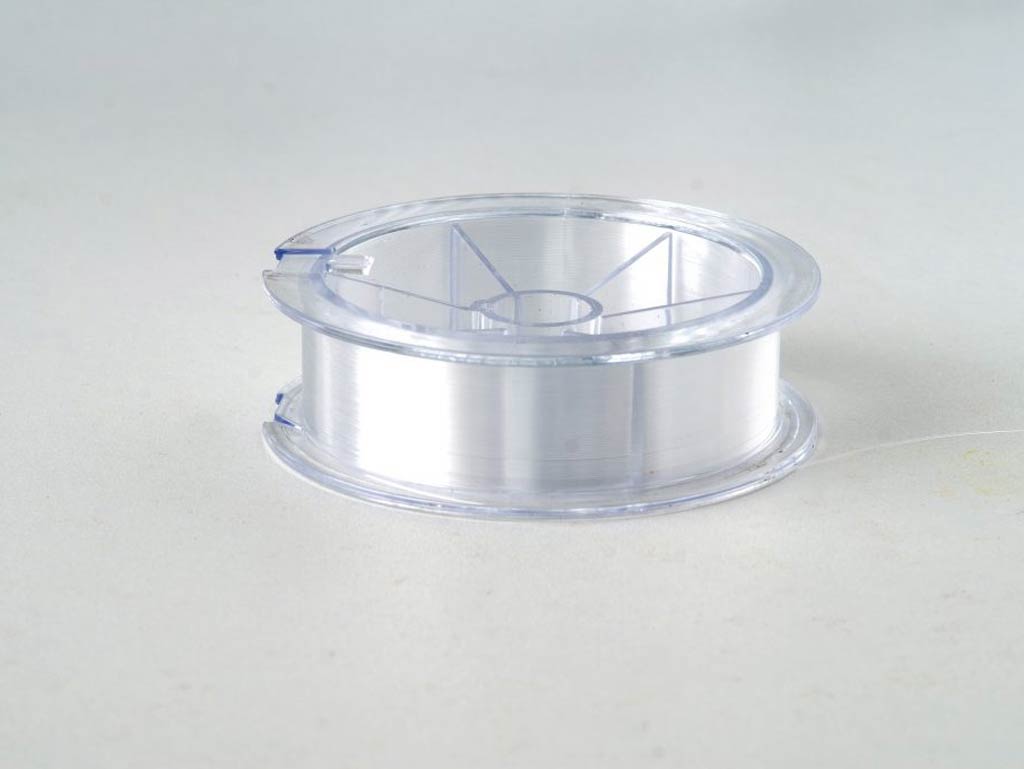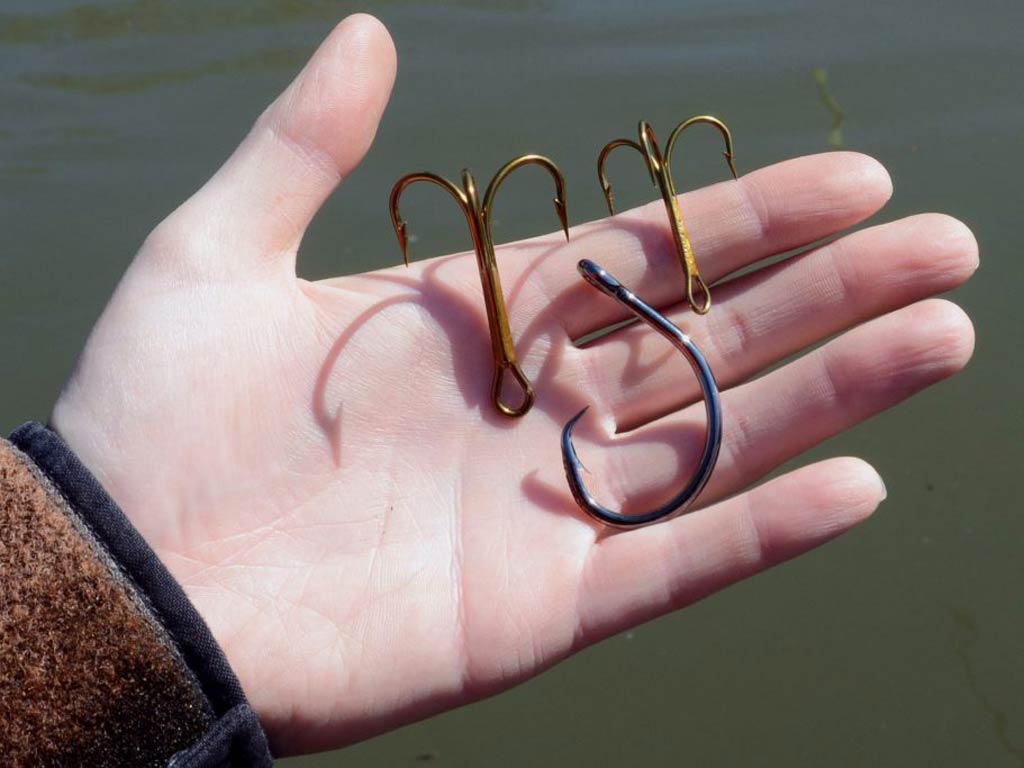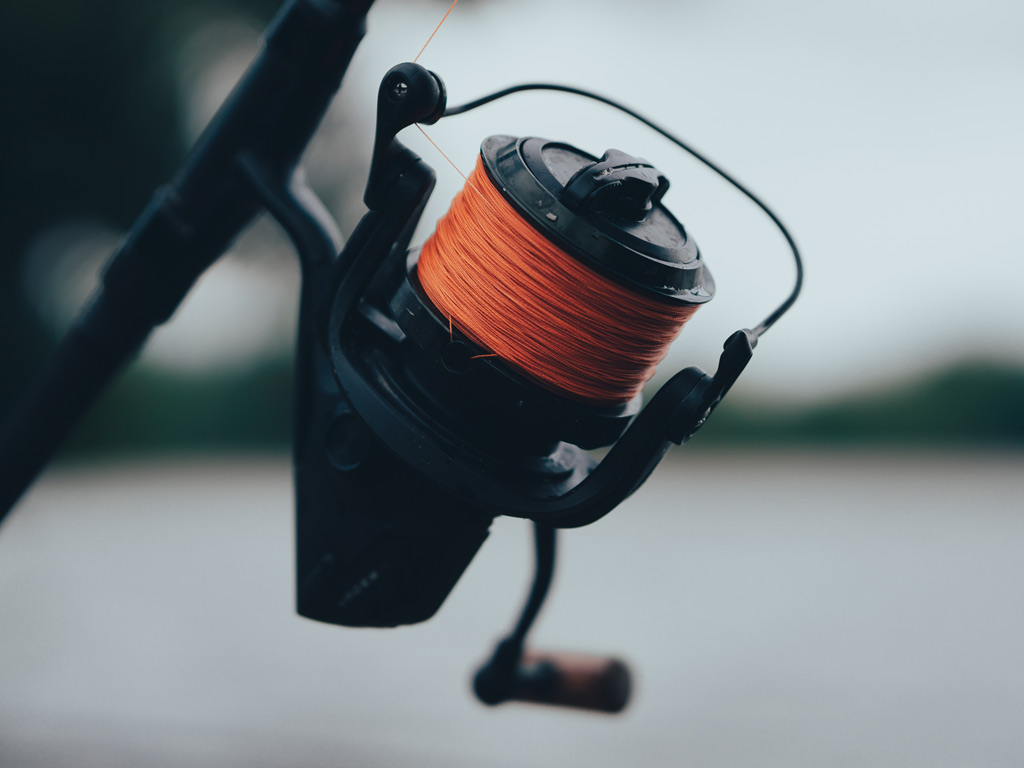Reading Time: 8 minutesBass fishing is a journey where even the tiniest decisions can lead to unforgettable moments and memories. Central to this adventure is a critical choice every angler faces—picking the right fishing line for Bass. This decision involves much more than simple preferences, diving into the worlds of fluorocarbon, monofilament, and braided lines.

Each brings its own narrative and hidden advantage to the water. That makes this journey so much more than merely casting a line! It’s about strategically tailoring your approach to embrace the varied challenges and rich environments you’ll encounter when Bass fishing. Different lines hold the key to your success, giving that little edge you need to reel in a monster.
As we unravel the strengths, quirks, and nuances of these three line types, our goal is to light the way to a thoroughly informed choice. By the time you’re done reading, you should have a strategic advantage. Sound good? Let’s learn more…
Exploring the Depths with a Fluorocarbon Fishing Line
Fluorocarbon is a staple in each Bass angler’s arsenal. It offers a blend of invisibility and strength that’s unmatched in the fishing world. This line’s ability to literally disappear from sight underwater makes it a top choice for clear water scenarios. I feel it provides an almost unfair advantage against keen-eyed Bass!
Beyond its stealth, fluorocarbon excels in its resistance to abrasions, ensuring that rocky bottoms or jagged structures won’t cut your day on the water short.
Why Fluorocarbon Stands Out

The composition of fluorocarbon gives it a unique position in the line spectrum. Unlike its counterparts, it sinks. This helps to get lures down into the strike zone swiftly and maintain a more direct line to the lure. This feature, combined with its minimal stretch, allows for an immediate and firm hook set. This is crucial when targeting deeper-dwelling Bass.
Investment vs. Reward
The cost of fluorocarbon lines is usually a consideration for anglers, as they generally come at a premium compared to others. However, their durability and the potential for increased success in catching wary Bass often offset the initial cost.
The key is to select a fluorocarbon line that balances manageability, strength, and cost. That way, you’ll have a line fit for your fishing style and the conditions.
Handling Characteristics
While fluorocarbon’s benefits are significant, anglers must navigate its quirks for optimal use. Its stiffness—a byproduct of its durable nature—can pose challenges in knot tying and manageability, particularly in colder weather.

But mastering the correct knots, such as the Palomar or the improved clinch, and regular line maintenance can turn these potential drawbacks into mere footnotes in this line’s list of attributes.
Strategic Use of Fluorocarbon Lines When Bass Fishing
Due to its ability to sink quickly, fluorocarbon stands out for methods such as Carolina rigging. Here, you’ll want to swiftly get your lure to the bottom and keep it looking natural. Additionally, its abrasion resistance and low visibility make it the line of choice for working through cover or fishing in clear conditions where Bass are most cautious.
Ultimately, if Bass are not striking aggressively, a fluorocarbon line can help detect subtle bites and quickly set the hook. This is the primary advantage of fluorocarbon fishing lines.
Monofilament Lines: The Go-to Choice for Versatility
Monofilament fishing lines have long been the go-to for anglers around the world. They’re beloved for their simplicity, versatility, and cost-effectiveness. Often simply referred to as “mono,” these lines are produced from a single strand of material (usually nylon), making it a straightforward choice for a range of fishing scenarios.
Understanding Monofilament’s Appeal

The appeal of a monofilament line lies in its user-friendly nature. Its inherent stretch offers a level of forgiveness during the fight, providing a shock absorber that can be crucial when battling Bass. This elasticity, combined with a mono’s buoyancy, makes it ideal for topwater lures and situations where a slower sink rate is beneficial.
Monofilament is also celebrated for its color variety and range of strengths and diameters, accommodating a broad spectrum of fishing tactics and preferences. The availability of clear to high-visibility colors means anglers can match their line to the water conditions, opting for invisibility or prioritizing visibility to track line movement.
Monofilament’s Limitations
Despite its widespread use and appeal, a monofilament line is not without its challenges. The very stretch that provides its shock absorption can also dampen sensitivity, making subtle bites harder to detect. Additionally, mono lines are susceptible to degradation from UV light and chemicals, necessitating more frequent replacement than some alternatives.
Its buoyancy, while an asset for certain lures and techniques, may not be ideal when you want depth or faster sinking. Anglers must weigh these factors, considering where and how they fish, to decide if a mono’s advantages align with their needs.
Monofilament Lines for Bass Fishing

A monofilament’s versatility shines in Bass fishing, where conditions and tactics can vary widely. Its stretch and shock absorption are particularly beneficial when using treble-hooked lures, as they can help prevent Bass from throwing the hook. For topwater enthusiasts, a mono’s natural buoyancy keeps lures skimming across the surface, mimicking prey.
Choosing monofilament for Bass fishing means balancing its stretch and buoyancy against the need for sensitivity and depth control. By selecting the right diameter and strength, anglers can optimize mono for everything from finesse presentations to power fishing techniques.
Braided Lines: Unmatched Strength and Sensitivity
In recent years, Bass fishermen have increasingly turned to braided fishing lines. These lines are prized for their unmatched strength, minimal stretch, and exceptional sensitivity. Crafted from several strands of synthetic materials such as Spectra or Dyneema, braided lines bring distinct benefits that are particularly suited for certain Bass fishing methods.
Characteristics That Define Braided Lines

A braided line’s most notable attribute is its minimal stretch. This quality translates directly into increased sensitivity, allowing anglers to feel even the subtlest nibbles or changes in underwater terrain.
Furthermore, its strength-to-diameter ratio is unparalleled, enabling the use of lighter reels and rods without sacrificing the power needed to wrestle large Bass or navigate through heavy cover.
Another advantage of braided lines is their longevity. Resistant to UV damage and abrasion, braided lines can last much longer than their monofilament or fluorocarbon counterparts. That, in turn, makes them a cost-effective choice over time.
However, their visibility in clear water can be a drawback, often necessitating the use of a fluorocarbon leader to maintain stealth.
Navigating the Challenges
While braided lines offer significant benefits, they also come with challenges that anglers must navigate.
The visibility issue in clear waters is a primary concern. But the lack of stretch, while improving sensitivity, also means a greater chance of pulling the hook out of the fish’s mouth. Additionally, braided lines require specific knots, as their slick surface can lead to slippage if not properly secured. Overall, you’ll need to be pretty careful when Bass fishing with a braided line.
Bass Fishing with Braided Lines

Braided lines excel in situations where strength and precision are paramount. Their ability to cut through vegetation and their suitability for deep water applications where sensitivity is crucial are ideal for frogging in lily pads or flipping in heavy cover.
The no-stretch characteristic also allows for immediate hook sets. This is crucial when fishing with reaction baits or in scenarios where quick response times are essential.
Choosing a braided line for Bass fishing involves weighing these characteristics against the intended fishing technique and environment. The type of bait, the density of the cover, and the clarity of the water all play a role in determining whether a braided line is the best choice for the situation at hand.
Choosing the Right Line for Your Bass Fishing Needs
When it comes to selecting the top fishing line for Bass, the choice often boils down to understanding the specific needs of your fishing environment and technique. Fluorocarbon, monofilament, and braided lines each bring unique advantages to the table. But the key to maximizing your success lies in matching these attributes to the conditions you’ll face on the water.
Strategic Considerations for Your Bass Fishing Line Selection
The diversity of Bass fishing demands a strategic approach to line selection. For anglers targeting Bass in clear water where stealth is paramount, a fluorocarbon’s low visibility offers a distinct advantage. Its ability to remain nearly invisible to fish—coupled with its sensitivity and abrasion resistance—makes it an ideal choice for finesse techniques or when presenting lures near wary fish.

In situations where a more forgiving line is beneficial, such as when fishing with topwater lures or in conditions with a lot of unexpected snags, monofilament is the go-to choice. Its stretch provides a buffer against sudden strikes and helps keep lures floating on the surface. It’s perfect for lures that perform best with a bit of give in the line.
But for anglers pushing into heavy cover or targeting Bass in environments where precision and power are necessary, the unparalleled strength and zero-stretch characteristics of a braided line make it the superior choice. Its ability to cut through vegetation and maintain a direct connection between angler and lure detects even the subtlest bites, setting the hook solidly and immediately.
Adapting to Bass Behavior and Habitat
Understanding the behavior of Bass and the nature of their habitat is crucial in choosing the right line. In colder months, Bass are slower and more deliberate in their strikes. The sensitivity of a braided line can better help detect those bites. During the spawn, when Bass are aggressive and protective, the stealth and durability of fluorocarbon can trick the fish into biting.
Expert Tips for Bass Fishing Line Success
Seasoned fishermen often keep a diverse collection of fishing lines, ready to switch them as conditions on the water shift. It’s wise to test different lines in the spots you frequent to see how each one fares. Matching the ideal line with the correct reel and rod setup can significantly increase your chances of success, ensuring your equipment acts as a unified front against the nuances of Bass fishing.
By thoughtfully assessing the requirements of your Bass fishing excursions and selecting your line with care, you’ll be better prepared to face whatever comes your way on the water. Whether you need the low visibility of fluorocarbon, the adaptability of monofilament, or the robustness of a braided line, making the right selection can enhance your fishing trips.
Casting Ahead to Bass Fishing Mastery

Spanning the invisible finesse of fluorocarbon, the versatile buoyancy of monofilament, and the unbeatable strength of braided lines, you now know the ins and outs of Bass fishing lines. The art of Bass fishing lies not just in the thrill of reeling in that picture-frame-bound Bass, but in the continuous cycle of learning, adapting, and evolving.
Hopefully, you’ve now learned how to adapt your Bass fishing line choice to your particular situation. The last thing to do is get out there and learn even more through experience!
Are you an avid Bass angler? What’s your favorite line? Have a question for us? Feel free to reach out in the comments below. We love hearing from you!
The post The Best Bass Fishing Lines: An Angler’s Guide appeared first on FishingBooker Blog.
https://fishingbooker.com/blog/bass-fishing-lines/
 CampingSurvivalistHuntingFishingExploringHikingPrivacy PolicyTerms And Conditions
CampingSurvivalistHuntingFishingExploringHikingPrivacy PolicyTerms And Conditions
